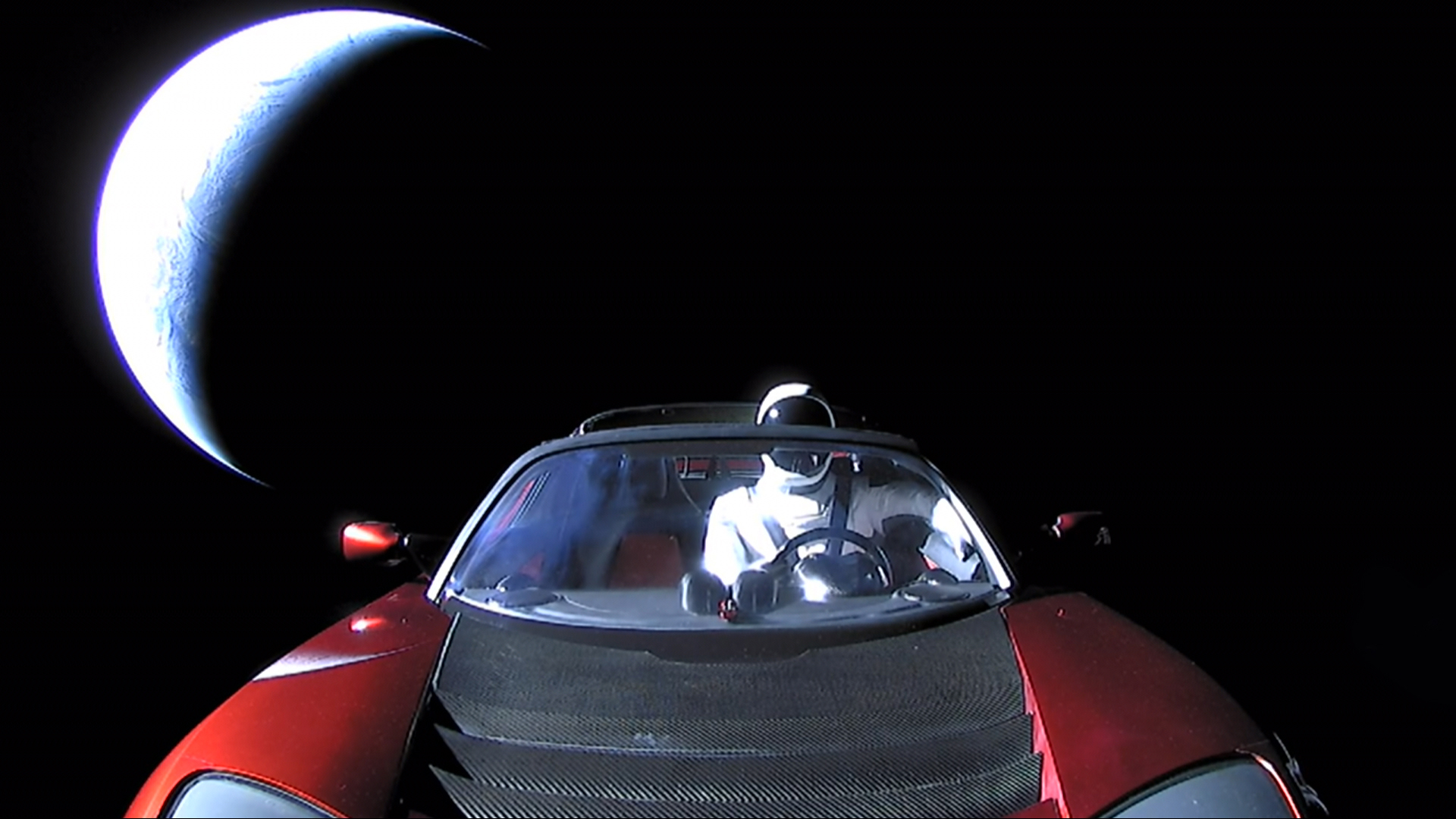If 'Starman' Isn't Headed for the Asteroid Belt, Where's That Dummy Going?

The Tesla Roadster and "Starman" dummy that SpaceX launched on its new Falcon Heavy rocket on Tuesday (Feb. 6) does not appear to be heading to the asteroid belt, despite what SpaceX founder and CEO Elon Musk said on Twitter Tuesday evening.
After orbiting the Earth for about 6 hours, the cherry-red Roadster (which was mounted on the Falcon Heavy's upper stage) set sail into the solar system. One hour later, Musk tweeted that the car had "exceeded Mars orbit and kept going to the asteroid belt." The plan was to send the Roadster on an elliptical orbit around the sun, swinging by Mars along the way.
Now, it looks like Starman isn't actually heading toward the asteroid belt at all. After SpaceX released data on Starman's orbit on Wednesday (Feb. 7), experts on social media started crunching the numbers and noted that the data didn't match the trajectory that Musk had tweeted the day before. Rather, the data shows that the Roadster's orbit around the sun will take it closer to Mars than the asteroid belt. [In Photos: SpaceX's 1st Falcon Heavy Rocket Test Launch Success!]
"The asteroid orbit plot was just a mistake," Jonathan McDowell, an astronomer at the Harvard-Smithsonian Center for Astrophysics, told Space.com.
McDowell explained that the error apparently arose when someone at SpaceX used an orbital parameter called C3 — a measure of the velocity needed to escape Earth's gravity — to determine the shape of the Roadster's orbit "and goofed while doing it."
"For selling the rocket to customers, C3 is what you care about, [and] the actual orbit around the sun is not relevant," McDowell said, "so they weren't careful about calculating it."
McDowell calculated that the Roadster will venture by Mars at a safe distance of about 70 million miles (110 million kilometers) as it crosses the planet's orbit in July.
Breaking space news, the latest updates on rocket launches, skywatching events and more!
The closest it will ever get to Mars will be in October of 2020 at a distance of about 4.4 million miles (7 million km), which is still "well outside Mars' gravitational sphere of influence," McDowell wrote on Twitter. This means that the Roadster definitely won't be orbiting Mars as Musk first announced it would in a tweet last December.
Even with the new, corrected trajectory, these numbers and time frames are not set in stone. NASA's ephemeris calculator for the Roadster states, "Over time, prediction errors could increase more rapidly than the formal statistics indicate due to unmodeled solar pressure, thermal re-radiation, or outgassing accelerations that are not currently characterized."
McDowell said that these factors could affect the Roadster's predicted encounters "by at least 10 percent in distance and several weeks in date."
NASA's Jet Propulsion Laboratory has made the Roadster data publicly accessible, and you can find it at ssd.jpl.nasa.gov/horizons.cgi (select "target body" -143205).
Email Hanneke Weitering at hweitering@space.com or follow her @hannekescience. Follow us @Spacedotcom, Facebook and Google+. Original article on Space.com.

Hanneke Weitering is a multimedia journalist in the Pacific Northwest reporting on the future of aviation at FutureFlight.aero and Aviation International News and was previously the Editor for Spaceflight and Astronomy news here at Space.com. As an editor with over 10 years of experience in science journalism she has previously written for Scholastic Classroom Magazines, MedPage Today and The Joint Institute for Computational Sciences at Oak Ridge National Laboratory. After studying physics at the University of Tennessee in her hometown of Knoxville, she earned her graduate degree in Science, Health and Environmental Reporting (SHERP) from New York University. Hanneke joined the Space.com team in 2016 as a staff writer and producer, covering topics including spaceflight and astronomy. She currently lives in Seattle, home of the Space Needle, with her cat and two snakes. In her spare time, Hanneke enjoys exploring the Rocky Mountains, basking in nature and looking for dark skies to gaze at the cosmos.
